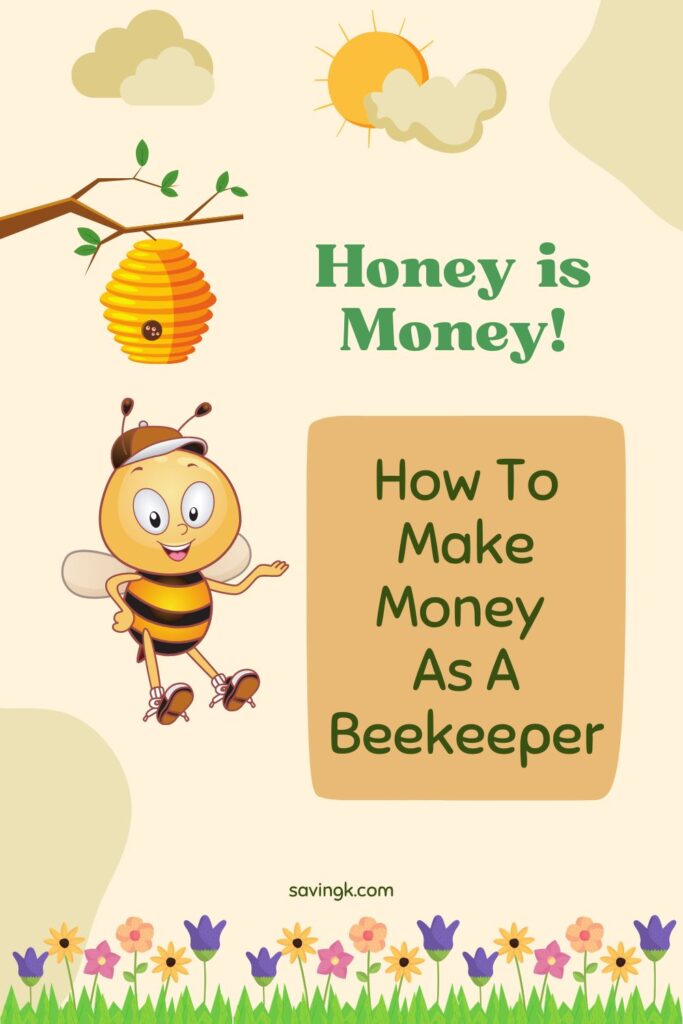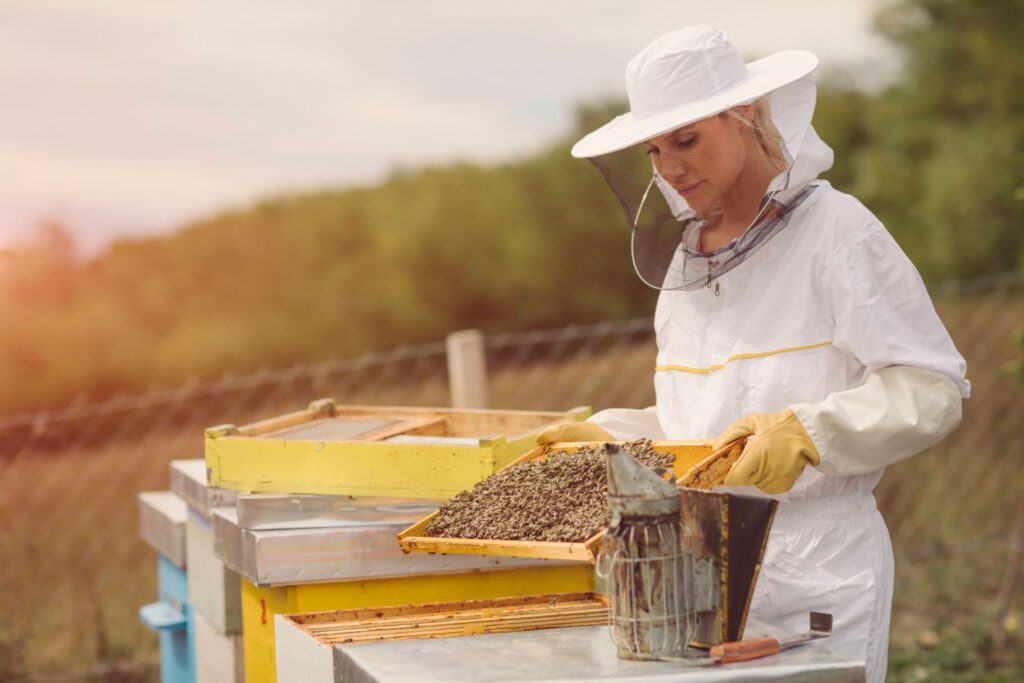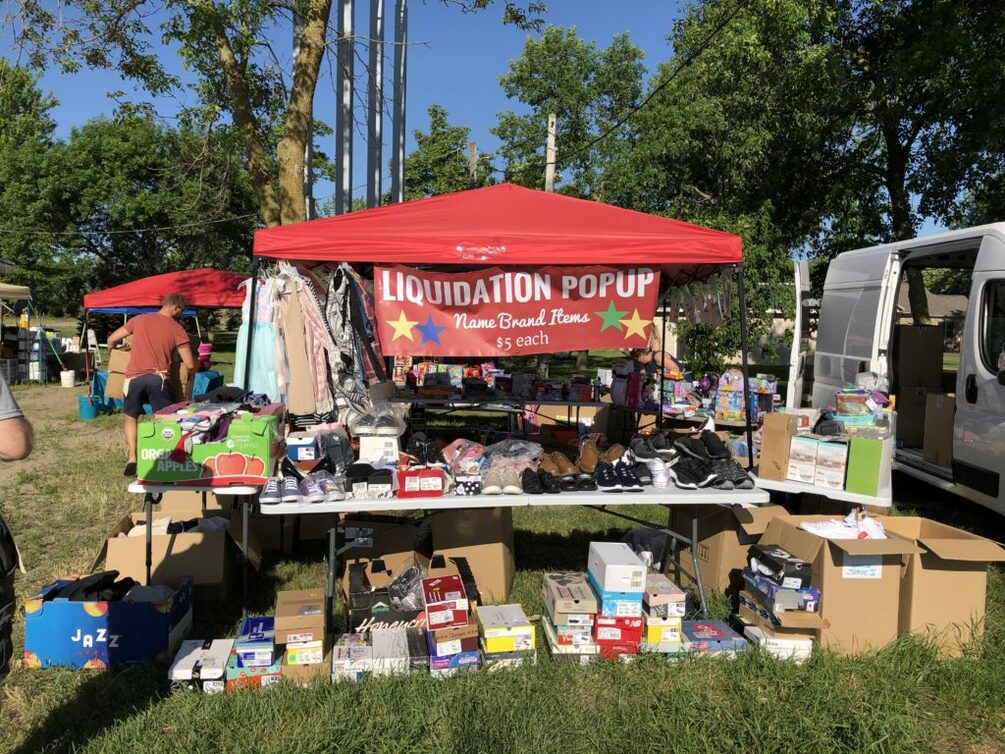
Being a beekeeper can be a great way to make money – and it’s not as difficult as you may think. Beekeeping is an ancient practice that has been around since at least the time of the ancient Egyptians, and today it’s a popular hobby for many people.
But did you know that beekeeping can also be a source of income? Yes, you can! Did you know that honey is the only commodity that never spoils? In other words, it’s a product with no expiration date! This makes honey an attractive option for making money as a beekeeper.
There are several different ways to make money as a beekeeper, but the most popular method is by selling honey and other bee-related products. You can start a small business selling your own honey in jars or bottles, or you can join forces with other beekeepers and form a co-op. This type of co-op can be a great way to share resources, access larger markets and make more money.
You can also make money by selling beeswax, a substance made from the wax of honeycomb cells. Beeswax is used in many different ways, such as for making candles, lotions and soaps. If you sell your beeswax, you can make a nice profit on the side.
If you’re interested in learning how to make money as a beekeeper, then this blog post is for you.
Contents
Things To Consider
Beekeeping can be a rewarding and lucrative venture if done right. But before you get started, there are some things to consider.
1. You Will Get Stung
Does the thought of being stung scare you? You will get stung no matter how many layers of clothing you have on. Even if you are wearing a full bee suit with gloves, you will still get stung. So you need to decide if this will bother you and if you are okay with taking the risk of being stung.
If you have any allergies to insect bites or stings, get tested by an allergist before joining the beekeeping community. If your reaction is mild, plenty of other beekeepers have Epi-pens on hand in case they accidently get stung themselves. However, if you are severely allergic, this might not be the hobby for you.
2. Strength Requirement
If you can lift at least 25 pounds, then you’re physically able to handle a beehive when it is full of honey. The most popular hives in the United States, the Langstroth, require quite a bit of strength to harvest. If you think this might be difficult for you, you may want to investigate different hive designs that don’t necessitate as much lifting.
3. Time Availability
Beekeeping takes up how much time? Like gardening, beekeeping is a seasonal activity. During the winter months, you’ll be mostly inactive as the bees are in their hives and aren’t producing honey. During the warmer months of spring through fall, you’ll be more active – but how much time that means depends on your own personal goals. If you want to make a lot of money from beekeeping, you’ll likely need to spend more time tending to your hives and harvesting the honey. If you are a beekeeper and plan on leaving your hives for an extended period of time, it’s advisable to have someone else check in on them while you’re away.
4. Costs of Beekeeping
Beekeeping equipment can be expensive, depending on the type and quantity you buy. You’ll likely need to purchase beehives, frames, wax foundation, hive tools, protective clothing and equipment for harvesting honey. Some beekeepers choose to make their own hives and frames, which can help reduce costs. You’ll also need to factor in the cost of protective clothing and equipment for harvesting honey.
To most effectively begin beekeeping, it is recommended by experienced professionals to start with two hives instead of one. Although the initial investment may be a bit pricey– around $300 for the hive and close to another $100 for bees during the first year.
Getting Started
Now that you know what to expect, let’s talk about getting started. You’ll want to make sure you have the right tools and equipment in order to get the most out of your beekeeping experience. Once you have everything in place, you can begin setting up your hives and introducing bees to them.
1. Learning About Bees
The first thing you’ll want to do is learn as much as possible about beekeeping and bees. Read books, talk to experienced beekeepers, and attend beekeeping classes or seminars. This will help you get a better understanding of the hobby and what to expect.
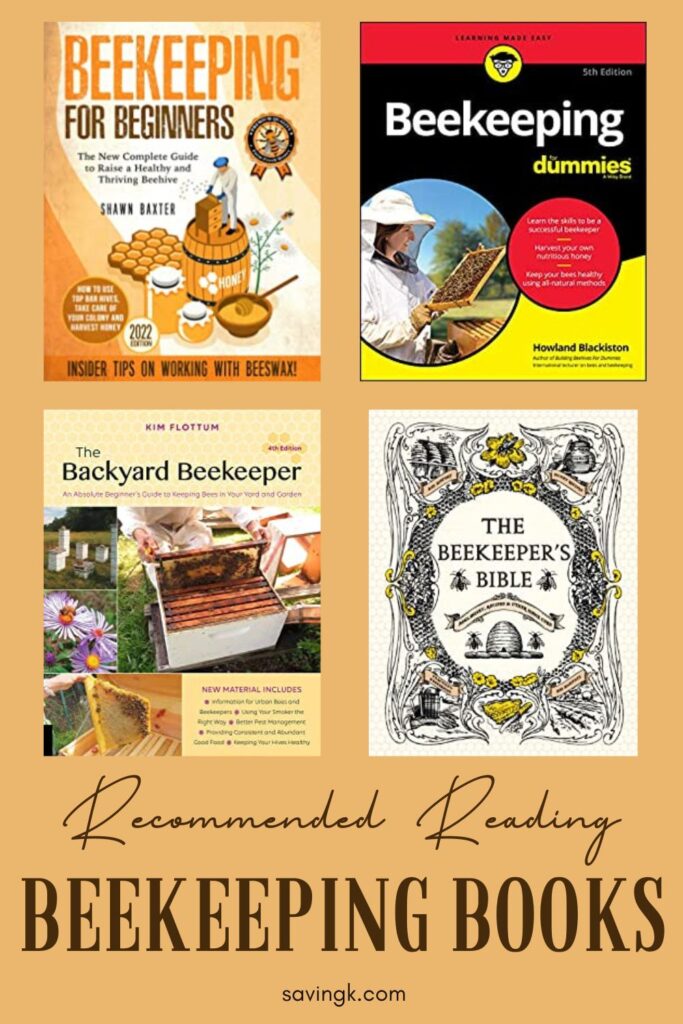
To become a beekeeper, one of the best things you can do is read about it as much as possible. Getting books from your library or local bookstore is a great way to start learning more about beekeeping. Here are some books we recommend from Amazon:
- Beekeeping for Beginners: The New Complete Guide to Raise a Healthy and Thriving Beehive. How to Use Top Bar Hives, Take Care of Your Colony and Harvest Honey. Insider Tips on Working With Beeswax
- Beekeeping For Dummies
- The Backyard Beekeeper, 4th Edition: An Absolute Beginner’s Guide to Keeping Bees in Your Yard and Garden
- The Beekeeper’s Bible: Bees, Honey, Recipes & Other Home Uses
2. Pick Your Location
Before you get your bees, think about where you will keep them. An ideal spot for honeybees is a sloped location that gets sun during the day but is sheltered from strong winds. The hives should also be easy to access year-round. Keep in mind that bees will fly up to 5 miles as they forage for nectar and pollen, so if there isn’t a good location on your property, see if there’s another place nearby where you can keep them.
Once you decide on the ideal spot, inquire at your local government about beekeeping, as many places have restrictions on where and how bees may be kept. Some places require permits while others only need hive registrations. Consulting ahead of time will save you a lot of trouble later on.
When you want to start keeping bees in your yard, it’s also important to consider how your other neighbors might feel about it too. If they do have reservations, be prepared with an explanation of why having hives would be beneficial. Not only will this help sway their opinion, but you may end up teaching them something new!
Once you’ve established that you’re allowed to keep bees in your area, you’ll need to purchase the necessary equipment such as hives, protective gear like gloves and veils, and of course, the bees themselves!
3. Find Supplies
Once you’re comfortable with your knowledge of beekeeping, it’s time to find the supplies and equipment you’ll need. You can find everything you need online or at local beekeeping supply stores.
4. Introduce Bees
You can buy bees online or from local beekeeping supply stores. Many places will also offer packages of bees that come with a queen bee and a few worker bees.
Once your hives are set up and ready to go, it’s time to introduce your bees. Depending on the method you choose, introduction may take a few hours to a few days. Be sure to research the different methods and decide which one is best for you before attempting to introduce your bees.
5. Harvest Honey
Finally, the most rewarding part of beekeeping- harvesting honey! Once you’ve established a thriving hive and your bees are working hard to collect nectar, you can begin to harvest honey. This process is usually done during the warmer months of the year, when flowers are blooming and the bees are producing lots of honey. The process of harvesting honey involves carefully extracting it from the hive frames without damaging them or harming the bees. This takes some skill and practice, but with time and patience you’ll get better at it. And once you’ve harvested your honey, all that’s left to do is bottle it up for sale or trade!
6. Marketing Your Honey
Once your honey is ready for sale or trade, the next step is marketing it. You can start by selling your honey at local farmers markets or online through platforms like Etsy. You can also reach out to local stores or restaurants in your area who may be interested in purchasing your product wholesale. Additionally, if there are any beekeeping clubs in your area they will often host events where members can sell their products directly to consumers—these events are great ways to promote your business and make connections with other beekeepers. Finally, don’t forget about word-of-mouth marketing—encourage friends and family members to spread the word about what you do!
Beekeeper FAQs
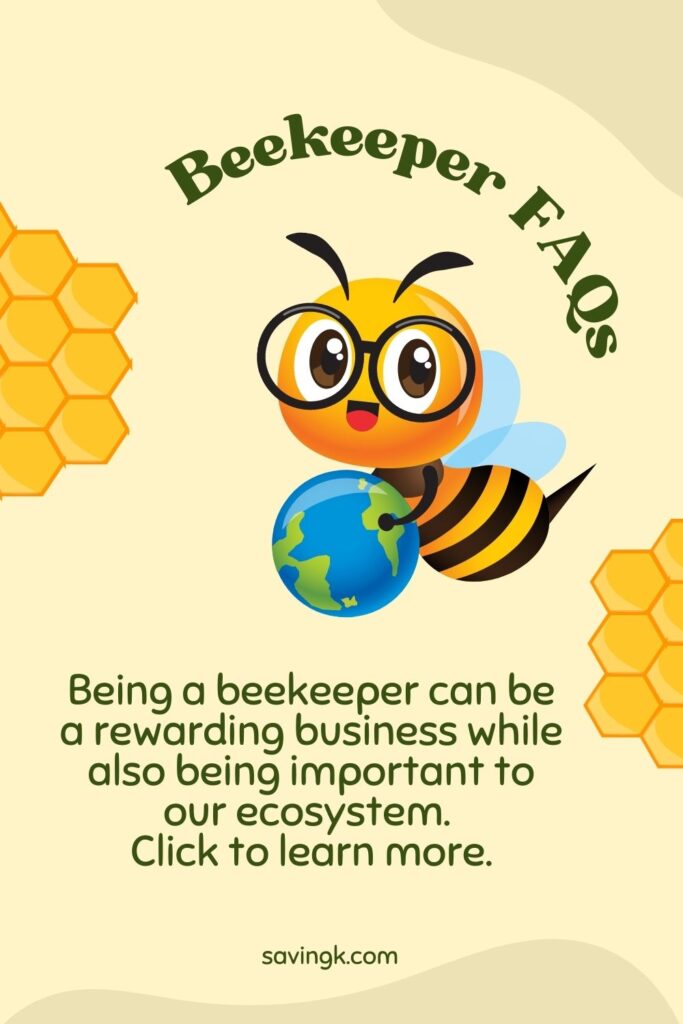
Here are some frequently asked questions about beekeeping.
The most common type of bee kept for honey production is the European honey bee (Apis mellifera). This type of bee is well adapted to many climates and produces large amounts of honey. However, other types of bees can also be kept for honey production, such as the Russian honey bee (Apis cerana) and the Western honey bee (Apis dorsata).
When handling bees, it’s important to wear protective clothing and gear such as a beekeeper’s veil, gloves, and other protective garments. It’s also important to check that all seams and crevices are covered, as bees can easily get inside these areas.
How often you need to harvest honey depends on the size of your hive and the number of bees. Generally, it is recommended to harvest honey at least once a year. However, some beekeepers may choose to harvest more frequently if their hives are producing a large amount of honey.
Before selling your honey, you need to make sure that it meets all of the legal requirements for sale in your area. Additionally, you should always label your honey jars with the type of honey, harvest date, and any other relevant information. Finally, it’s important to research the best marketing methods for selling your honey. You may choose to sell it online, through retailers, or directly to consumers at farmers markets and other events.
In order to keep bees, you’ll need a hive, protective gear (such as gloves and veils), bee feeders, and bees. Other helpful equipment can include an extractor for harvesting honey, bee smoker for calming the bees, and a bee brush for cleaning frames.
A beekeeper suit is often referred to as a “bee veil” or “veil suit.” It typically consists of a long-sleeved shirt, pants, gloves, and a hat with a veil attached. This suit helps protect the beekeeper from stings while tending to their hives.
The ideal location for a beehive is one that has access to plenty of flowers and vegetation for the bees to forage. Additionally, the hive should be in a spot that is sheltered from strong winds and excessive sunlight. Lastly, make sure your hive has plenty of space around it for the bees to fly freely, and that it is not too close to other hives or any human activity.
Generally, it is recommended to inspect your hives at least once a month, especially during the spring and summer months. During inspections, you’ll want to check for pests or diseases, make sure the bees are healthy, and make sure they have enough food and nectar. Additionally, you’ll want to check the frames for any signs of honey production.
The amount a beekeeper makes in a year varies based on several factors such as the size of their operation, the quality of their product, and the demand for their honey. Generally, beekeepers can make anywhere from a few hundred dollars to over $20,000 per year depending on these factors.
It is possible to make a living as a beekeeper, though it can take some time and hard work. Successful beekeepers are able to make a living by selling their honey, beeswax, and other products such as hive tools or beekeeping classes. Additionally, some beekeepers are able to supplement their income with jobs such as teaching or consulting.
It is important to remember that while beekeeping can be a lucrative business,
it is also a lot of hard work and dedication. It takes skill, patience, and a strong commitment to the job in order to be successful.
Adee Honey Farms is currently the largest commercial beekeeping enterprise in America, comprising of 80,000+ bee colonies and a team of nearly one-hundred individuals. It has locations spread across five states with bees placed in an additional five for honey production or pollination services.
No, you do not need a degree to become a beekeeper. However, it is recommended that aspiring beekeepers take classes in apiculture (the science of beekeeping) to learn the basics of managing a hive and producing quality honey. Additionally, taking classes or seminars from experienced beekeepers is a great way to learn more about beekeeping.
A beekeeper is someone who owns and manages a beehive while an apiarist is someone who specializes in the scientific aspects of beekeeping, such as managing colonies for pollination or honey production. Apiarists typically have more formal education and experience in the field than beekeepers.
Yes, usually when a bee stings a human or other animal, it will die shortly after. The bee’s sting is barbed and if it stings an animal with thick skin, such as a human, it will get stuck in the skin and be unable to pull it out. This causes the bee’s abdomen to tear and the bee will die shortly after.
The most important thing you can do to help protect honeybees is to plant a garden that includes various flowering plants. This will give honeybees access to food and provide them with nectar which they can use to create honey. Additionally, you can help support local beekeepers by buying their honey products or volunteering your time. Lastly, reducing the use of pesticides and other harmful chemicals can also help protect honeybees.
Yes, bees make noise, though it is usually too soft for the human ear to hear. They communicate with each other through vibrations and low-pitched buzzing sounds that are generated by their wings. These sounds are used to alert other bees of danger, signal that food has been found, and inform other bees of the location of the hive.
If you find a swarm of bees, it is best to contact a beekeeper or local beekeeping association for help. Beekeepers can safely remove the swarm and relocate it to a new hive. Do not attempt to remove the swarm yourself as this can be dangerous. Additionally, it is important to not spray the bees with insecticides as this will likely kill them.
Conclusion
Beekeeping can be a great way to make extra income while helping out our environment by providing pollination services for local plants and flowers. With careful planning and dedication it’s possible to turn this hobby into a lucrative business venture—all while enjoying all of the other benefits that come along with being a beekeeper such as fresh air, relaxation time spent outdoors away from screens, plus delicious homemade honey! So if you’re looking for another source of income apart from traditional jobs consider giving beekeeping a try – we guarantee it won’t disappoint!
